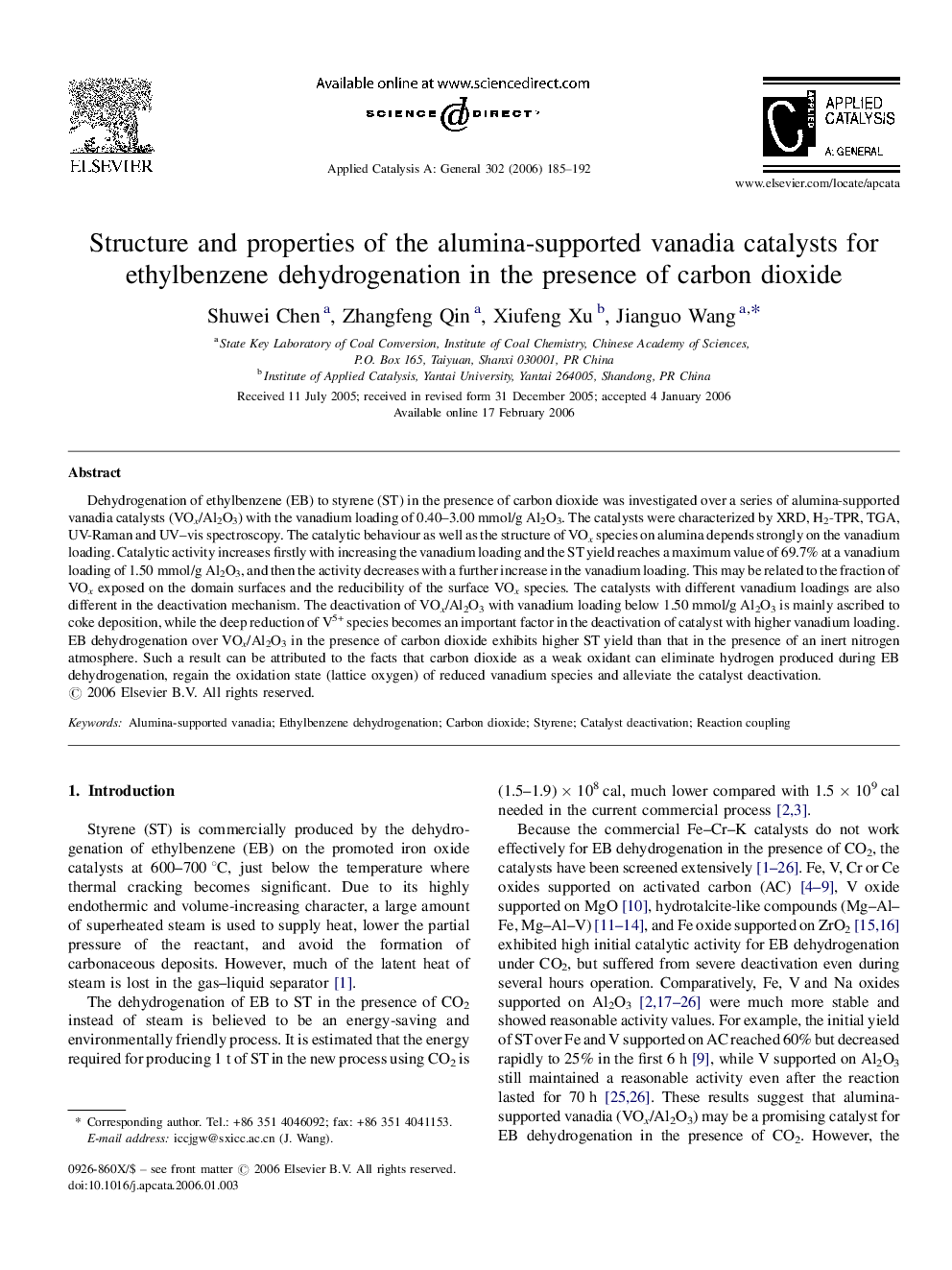| کد مقاله | کد نشریه | سال انتشار | مقاله انگلیسی | نسخه تمام متن |
|---|---|---|---|---|
| 44548 | 46041 | 2006 | 8 صفحه PDF | دانلود رایگان |

Dehydrogenation of ethylbenzene (EB) to styrene (ST) in the presence of carbon dioxide was investigated over a series of alumina-supported vanadia catalysts (VOx/Al2O3) with the vanadium loading of 0.40–3.00 mmol/g Al2O3. The catalysts were characterized by XRD, H2-TPR, TGA, UV-Raman and UV–vis spectroscopy. The catalytic behaviour as well as the structure of VOx species on alumina depends strongly on the vanadium loading. Catalytic activity increases firstly with increasing the vanadium loading and the ST yield reaches a maximum value of 69.7% at a vanadium loading of 1.50 mmol/g Al2O3, and then the activity decreases with a further increase in the vanadium loading. This may be related to the fraction of VOx exposed on the domain surfaces and the reducibility of the surface VOx species. The catalysts with different vanadium loadings are also different in the deactivation mechanism. The deactivation of VOx/Al2O3 with vanadium loading below 1.50 mmol/g Al2O3 is mainly ascribed to coke deposition, while the deep reduction of V5+ species becomes an important factor in the deactivation of catalyst with higher vanadium loading. EB dehydrogenation over VOx/Al2O3 in the presence of carbon dioxide exhibits higher ST yield than that in the presence of an inert nitrogen atmosphere. Such a result can be attributed to the facts that carbon dioxide as a weak oxidant can eliminate hydrogen produced during EB dehydrogenation, regain the oxidation state (lattice oxygen) of reduced vanadium species and alleviate the catalyst deactivation.
Journal: Applied Catalysis A: General - Volume 302, Issue 2, 11 April 2006, Pages 185–192